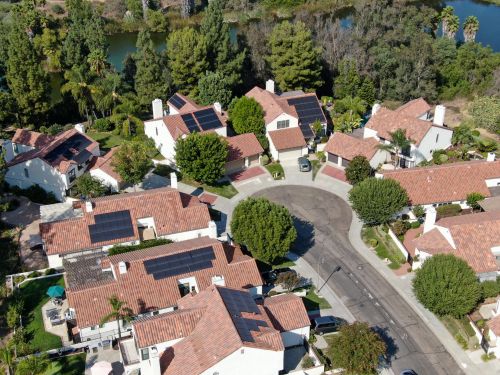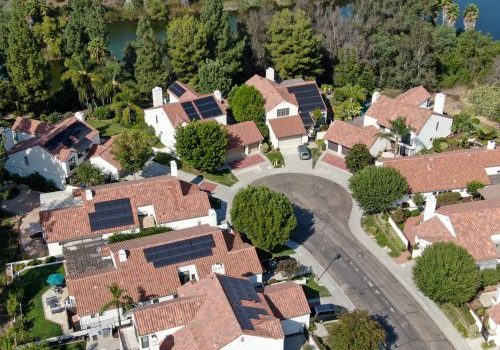California’s Plan: Crowdsource Distributed Energy to Replace Grid Upgrades
California’s Plan: Crowdsource Distributed Energy to Replace Grid Upgrades

California regulators are on the cusp of breaking open a long-awaited opportunity to enlist rooftop solar, behind-the-meter batteries and other distributed energy resources (DERs) to substitute for expensive grid upgrades.
It’s called the Partnership Pilot, and according to DER developers, it could be a major step forward in a distribution resources plan effort that’s been underway in California since 2014 and is being duplicated under names like “distribution system planning” and “integrated distribution planning” in many other states.
The goal of these state-by-state efforts is to find ways for utilities, customers and third-party aggregators to capture the grid value of DERs. One clear opportunity is getting them to respond to utility signals to reduce peak loads on local grid circuits.
Utilities have to build and upgrade power lines, transformers and other grid equipment to ensure they can support those peak loads, even when they may only arise for a few hours of the day during the hottest months of the year. DERs that can reliably shift loads in those hours could defer “wires” upgrades for years, or perhaps indefinitely, which is why they’re often called “non-wires alternatives,” or NWAs.
But NWAs haven’t taken off as hoped. Regulated utilities, besides facing the prospect of replacing capital investments that earn a guaranteed rate of return with contracts that don’t, are leery of DER aggregations that may not be as reliable as tried-and-true grid upgrades. That’s led to stringent requirements and complicated procurement rules for those seeking to serve that role, which developers argue have prevented most NWAs from getting past the proposal phase.
“Ratable procurement”: A pay-as-you-go approach to meeting grid needs
The pilot project awaiting a vote by the California Public Utilities Commission would break open many of the barriers in the distribution investment deferral framework that governs these efforts in the state, proponents say.
Most notably, it would replace an existing all-at-once project procurement process with a tariff-based “ratable procurement” structure, one that rewards customer-owned DERs on an individual basis, and scales up its targets from year to year for grid needs likely to arise three to five years in the future.
That will allow developers to gradually build up a critical mass of customers with DERs they’re willing to submit to utility dispatch — and get paid for that incremental growth as it’s completed — rather than be forced to either commit to deliver megawatt-scale blocks of capacity years ahead or forgo the opportunity.
This is a much better fit for DERs since it “allows DERs to meet incremental needs in the distribution system as they occur over time,” instead of forcing “the entire upfront needs to be identified all at once and have one shot at getting it right,” said Rachel McMahon, senior public policy manager at Sunrun.
The leading U.S. residential solar installer has led the rush of rival solar-storage developers like Tesla, sonnen, Generac and others to secure virtual power plant contracts in multiple states to aggregate battery-solar systems for wholesale grid capacity. It has also long advocated for tariff-based structures to do the same for distribution deferral in California.
California’s investor-owned utilities have argued against this approach. In comments filed with the California Public Utilities Commission, Pacific Gas & Electric and San Diego Gas & Electric laid out concerns that open-ended, tariff-based procurements might either fail to subscribe the needed customers in time to relieve stressed grid circuits or lead to oversubscriptions that would end up paying for more DERs than are needed.
To prevent this, the CPUC will require aggregators to fill at least 90 percent of the needs identified for each year before they can initiate contracts with utilities and close subscriptions when they reach 120 percent of the target. The total cost of these contracts will also be set at 85 percent of the cost of the wires upgrade they’re replacing to make sure utility ratepayers aren’t overpaying customers and aggregators.
A win-win for DER developers and utility ratepayers?
Beyond giving DER developers a route to serving grid needs that fits better with the way they do business, this method may well be a more cost-effective way for utilities and regulators to deal with distribution grid changes, said Jin Noh, senior policy manager with the California Energy Storage Association.
That’s because the distribution grid investment needs being targeted are hard to predict and may change between the time they’re forecasted and when they actually arise. Some load increases can be predicted, as with new subdivisions, office parks, factories or even “a new marijuana farm that has a large amount of load,” he said — the latter a novel but growing class of electricity consumer in California.
At the same time, “downstream of a particular circuit or substation, there could be a new development that’s driving a gradual load increase,” he said. Rising installations of electric vehicle chargers, or switching natural-gas-fired furnaces and water heaters to all-electric appliances, are another source of growing strain on California’s grid.
In short, “a lot of these needs grow over time,” Noh said. “In year two, we’ll see a 3-megawatt overload. In year four, we’ll see a 7-megawatt overload.” DER subscriptions can be fine-tuned to match both incremental growth and changes in forecasted growth, which could end up saving even more money compared to a utility project that has to be completed once and last for years.
As for the tariffs that utilities would be tasked with creating to ensure that participating DERs can be relied on to do what the grid needs them to do, “this would all be project- and location-specific,” he said. “There’s a specific planned investment, intending to address an overload from, say, 3 to 6 p.m. They’ll probably structure a capacity and performance payment around that” with “a small portion that’s upfront payments to support new build.”
If the CPUC approves the program, California’s utilities will be under the gun to come up with these tariffs in time to start offering DER developers a chance to compete for a set of pilot grid circuits by late this year. By next year, this approach to meeting grid needs with DERs could be broadened to a wider scope of grid projects in utilities’ annual deferral opportunity processes, he said.
To be clear, it’s likely that projects suitable for DER deferral will make up only a fraction of the hundreds of distribution grid upgrades that California’s utilities spend billions of dollars on every year. Even so, “from what I’ve heard from developers, this is an attractive market,” he said.
A new step in expanding DER grid values
Beyond the short-term market opportunities, however, the Partnership Pilot will also address a long-running thorn for DER developers looking to serve broader grid needs in California, Sunrun’s McMahon said — the issue of incrementality and double payments.
Utilities have largely succeeded in arguing that the CPUC should set limits to DERs that earn state incentives from one program from being allowed to participate in others, on the grounds that this ends up spending ratepayer dollars to pay DERs twice for the same service.
For example, solar-battery systems earning money under California’s net metering regime, or that have been funded from its Self-Generation Incentive Program, have been barred from participating in other state-mandated pilot programs that enlist them as grid assets.
But the CPUC’s proposed decision sets a new standard for this issue: that “distributed energy resources can provide multiple incremental services and should be compensated for each service.” That’s an important step forward for DER aggregators since net metering and other incentives are “still very necessary to deploy solar and storage systems, with grid services laid on top,” McMahon said.
That’s an important first step toward expanding the role of DERs across a wide range of needs facing the state, said Steven Rymsha, Sunrun’s director of grid solutions public policy. For example, last summer’s heat-wave-driven rolling blackouts have prompted the CPUC to seek out new resources that can reduce grid demand on an emergency basis, and its wildfire-prevention grid blackouts are prompting work to develop community microgrids.
At the same time, DER providers are arguing for changes to the state’s resource adequacy program to relieve behind-the-meter resources of market rules that can limit their recognized grid relief value. A program that can give aggregators like Sunrun a chance to prove they can be relied on to ease grid stresses at the local level could bolster confidence in broader applications, he said.
“We’re waiting to see the opportunity, and then go for it, and really prove how this pilot can much more quickly meet the needs of the distribution system more cost-effectively, and with greater customer participation,” he said. “We’re talking about thousands of customers in a tight geography adopting DERs. That’s going to have massive benefits.”









